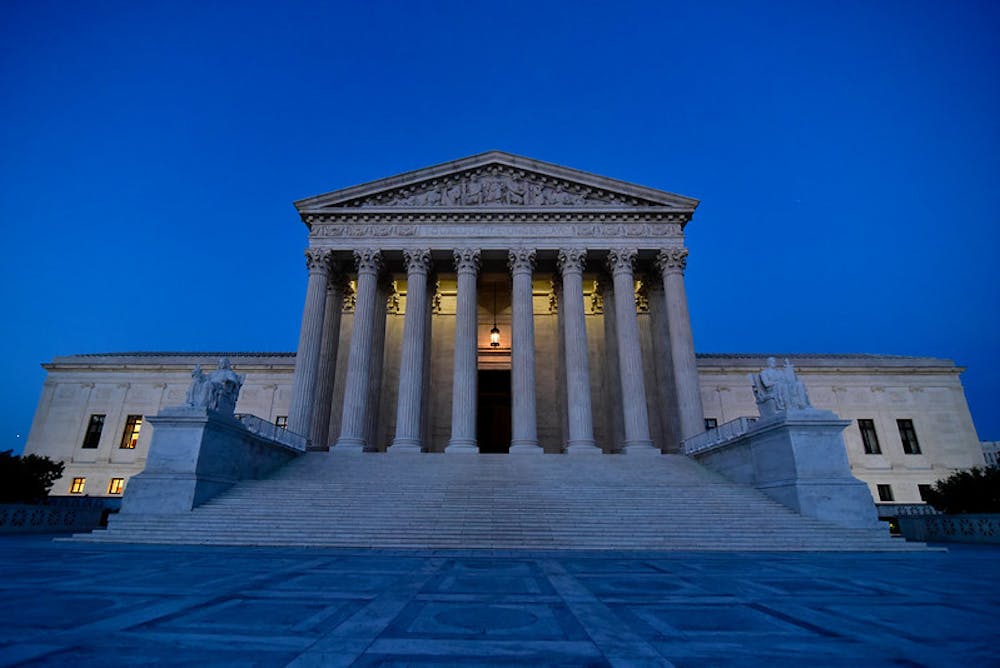The predictability of judicial proceedings based on precedent is the cornerstone of our common law system. Unfortunately, the closer this predictability aligns with ideological beliefs held by judges, the farther we stray from the foundational values of our country. This disparity can clearly be seen when comparing rulings from the Supreme Court of the United States (SCOTUS): two recent cases against New York Governor Andrew Cuomo and a case against U.S. President Donald Trump and his “Muslim ban” early in his presidency.
Throughout the pandemic, Cuomo has met with leaders and warned respective religious institutions about adherence to health department rules and regulations. In early October, COVID-19 case numbers rose in New York state, leading Cuomo to sign Executive Order 202.68, a strategy to fight micro-cluster outbreaks of the virus. Cuomo further defined regulations on how religious congregations and places of gatherings should handle themselves: “In red zones, no more than 10 persons may attend each religious service, and in orange zones, attendance is capped at 25.”
Both Agudath Israel of America and the Roman Catholic Diocese of Brooklyn brought cases against Cuomo to SCOTUS, seeking relief from his order under the pretense of the Free Exercise Clause of the First Amendment. They claim that though they “complied with all public health guidance” and held congregations “without a single outbreak,” Cuomo is attacking and placing greater burdens on religious institutions compared to secular organizations through his order.
These statements in their plea present the organizations as law-abiding. Yet their own websites and newsletters report outbreaks and deaths among congregants; “Five people test positive for the Coronavirus in the Diocese of Brooklyn including Three Priests,” “..Death of a Beloved Pastor due to Coronavirus,” “Seven Coronavirus Cases Confirmed...,” just to name a few headlines. The Diocese even took the initiative early in the pandemic to voluntarily shut down all churches in Brooklyn and Queens to “prevent the ever-present possibility of the virus spreading.”
The plaintiffs challenged the notion that Cuomo could decide which institutions were to be considered “essential” and which weren’t, as seen in Justice Gorsuch’s concurring opinion for the majority: “In his judgment laundry and liquor, travel and tools, are all ‘essential’ while traditional religious exercises are not. That is exactly the kind of discrimination the First Amendment forbids.” SCOTUS is conveniently equating the experience of a religious congregation to an individual’s grocery run, without regard to guidance from the Centers for Disease Control and Prevention (CDC) that places of worship pose heightened risk for COVID-19 transmission.
This should not be treated as a radical “departure from the First Amendment” due to the simple fact that COVID-19 does not discriminate between a religious congregation, college lecture hall or any other large gathering. In fact, a congregation at its core is a large gathering of people; it looks like Cuomo actually treated houses of worship more favorably compared to their secular counterparts. If subjected to the same restrictions as secular activities with a comparable degree of transmission risk, these religious institutions would have been blocked from congregating at all.
SCOTUS decided to present itself as the defender of religious freedom against a perceived attack by Cuomo. Yet it didn’t feel as impassioned to fight for liberties when Trump’s Executive Order 13769 and extension — also known as the so-called “Muslim Ban” — was reviewed back in 2018.
Under the guise of national security interests, the Trump administration barred entry of foreign nationals from predominantly Muslim countries. The order was brought before SCOTUS due to the blatant discrimination toward this swathe of immigrants as both violating non-discriminatory principles in immigration law ensured by the Immigration and Nationality Act and the Establishment Clause which prevents legislation from favoring religion over non-religion (sound familiar, Cuomo?) or one religion over another.
In the “Muslim ban” we see an actual radical departure from the First Amendment. SCOTUS was presented with mounting evidence of anti-Muslim sentiment and verbiage by the Trump campaign and Trump’s own Department of Homeland Security failing to conclude that citizenship in one of these countries correlated to a terrorist threat to national security. The dissenting Justices declared the executive order “plainly unconstitutional.” Ironically, the Justices who ruled against Cuomo’s order sided with Trump back in 2018, stating they found that “evidence of anti-Muslim discrimination is unpersuasive.”
In the case against Trump, the court batted in his defense in spite of the baselessness of his order and the religious infringements present in the case. The Trump order’s implementation following SCOTUS’s concurrence resulted in the lowest refugee resettlement program admissions ever reported; fewer visa waivers being granted through the Visa Waiver Program, which endorses business or tourist stays for foreign nationals; and rising hate crimes motivated by religious animus or racial bias.
Despite public health guidance and scientific evidence, Cuomo’s order was treated differently. SCOTUS merely advocated for looser regulations, which happened anyway as the red-zone affected areas naturally saw decreases in cases due to the efficacy of his order, but the long-term implications (specifically case numbers) remain unclear.
What is clear, however, is that the Trump appointees of SCOTUS will remain even after the fall of his administration, making SCOTUS fundamentally different — a changeup pitcher on the mound, the beginning of a new, perhaps more grim era. In Cuomo’s own words, “This was really just an opportunity for the court to express its philosophy and politics.”
Anju Felix is a dual-degree sophomore studying Neuroscience, Political Science and Harp performance from Port Murray, N.J. She is a writer for the Triple Helix scientific journal.





